Sewing silk is a delicate yet rewarding endeavor that requires precision, patience, and a deep appreciation for this luxurious fabric. Renowned for its lustrous sheen and smooth texture, silk has been prized for centuries in textile arts around the world.
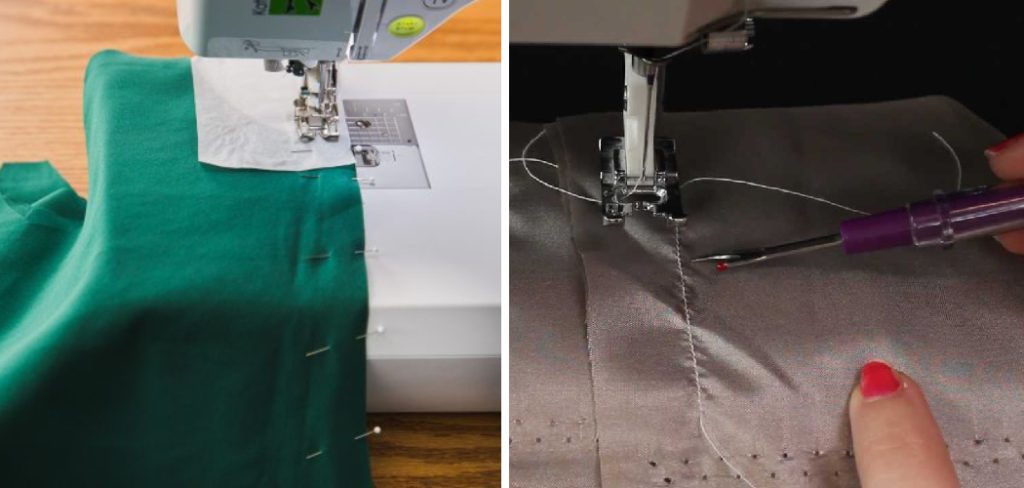
Whether creating elegant garments, luxurious linens, or delicate accessories, mastering the art of sewing silk opens up a world of creative possibilities for artisans and hobbyists alike.
However, working with silk presents unique challenges due to its delicate nature and tendency to fray or slip. From selecting the appropriate needles and thread to mastering specialized stitching techniques, sewing silk requires careful attention to detail and a gentle touch.
In this guide, we’ll explore how to sew silk, offering tips, tricks, and techniques to help you achieve professional-quality results and unlock the full potential of this exquisite fabric in your sewing projects.
Importance of Proper Techniques for Sewing Silk Fabric
The significance of employing proper techniques when sewing silk cannot be overstated. Silk, with its unmatched elegance and fragile composition, demands a technique that complements its luxurious nature.
Incorrect methods can easily lead to puckered seams, misaligned patterns, or even irreversible damage to the fabric. Utilizing the right techniques ensures not only the integrity of the silk but also enhances the finished garment’s appearance, embodying the fabric’s natural grace and fluidity.
Furthermore, adopting a meticulous approach to sewing silk pays homage to the fabric’s ancient and esteemed history, respecting the craftsmanship that has evolved over centuries.
Therefore, mastering these techniques is not merely a practical necessity but a tribute to the art of sewing itself, allowing crafters to produce garments that are as enduring as they are beautiful.
Understanding Silk Fabric
To excel in sewing silk, one must first understand the nuances of the fabric itself. Silk comes from the cocoons of silkworms, and its natural protein fibers give it a distinctive smoothness and sheen.
There are various types of silk fabric, each with unique characteristics that affect how it should be handled in sewing projects. For instance, lightweight silks like chiffon and habotai are airy and translucent, suitable for fluttery garments that require a delicate touch.
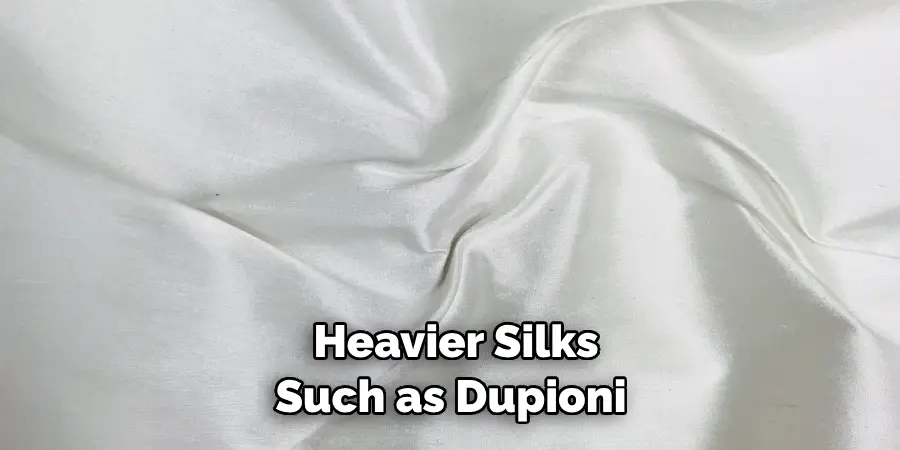
In contrast, heavier silks such as dupioni and brocade offer more structure and are ideal for more formal attire or decorative items. Additionally, the weave of the silk can influence its texture and appearance; satin silk, with its high sheen, differs markedly from the matte, textured finish of raw silk.
Recognizing these variations is crucial for selecting the right silk for your project and determining the appropriate sewing techniques. Furthermore, understanding the fabric’s propensity to fray and slip during the sewing process can guide the preparation and handling of silk, ensuring smoother, more predictable outcomes.
Properties of Silk and How They Affect Sewing
Silk’s properties not only grant it its alluring appeal but also influence how it must be approached in sewing projects. Key among these properties are silk’s delicacy, elasticity, and its tendency to fray and slip. Firstly, silk’s delicate nature means it is susceptible to damage from heat, water, and physical manipulation.
This necessitates the use of lower temperature settings on irons and careful handling during pre-washing and sewing to prevent snags and tears. Secondly, silk possesses a natural elasticity that, while lending garments a flattering drape, can lead to stretching and misshaping if not handled with care. Sewers must provide suitable support during the sewing process to maintain the fabric’s intended shape.
Furthermore, silk’s propensity to fray and slip presents additional challenges. Its edges can unravel with ease, making clean cuts and finishing techniques crucial for preventing fabric waste and ensuring the longevity of the garment. The fabric’s slippery surface requires the use of fine, sharp pins and needles to avoid displacing the fabric layers or causing runs.
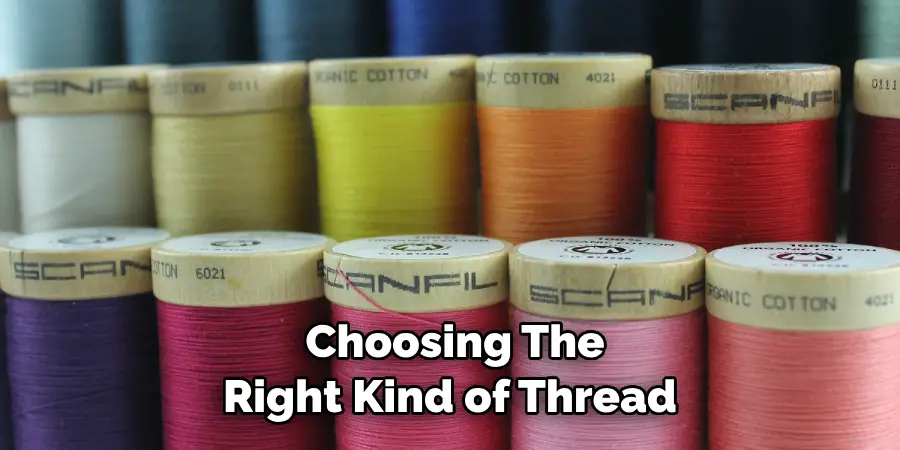
Additionally, choosing the right kind of thread – typically fine silk or polyester – and adjusting the sewing machine’s tension can mitigate issues of slipping and puckering, ensuring smooth, even stitches.
Incorporating strategies to address these properties can significantly enhance the sewing experience with silk. By understanding and respecting silk’s unique characteristics, sewers can achieve exquisite results that capture the fabric’s inherent beauty and elegance.
Choosing the Right Silk Fabric
Selecting the appropriate silk fabric for your project is a decision that can significantly influence the outcome of your sewing endeavor. Given the variety of silk types available, understanding the requirements of your project is paramount. For instance, if you’re aiming to craft a flowing evening gown, silk varieties like charmeuse or georgette, known for their drapability and glossy finish, may be ideal.
On the other hand, for more structured pieces such as jackets or purses, a sturdier silk like dupioni or shantung would be more suitable, providing the necessary shape and durability.
When choosing your silk, assess the weight, weave, and texture carefully. Lighter weights are excellent for delicate, airy pieces, whereas heavier silks lend themselves to items requiring more form.
The fabric’s weave affects both appearance and behavior during sewing; silk satins offer a lustrous sheen ideal for luxury garments, while crepe de chine presents a subtle texture and matte finish, offering versatility and ease of sewing.
Additionally, consider the fabric’s color and pattern. Silk’s natural affinity for dye produces vibrant colors and sharp patterns, but remember that these visual elements must align with your project’s design vision.
Lastly, factor in the silk’s quality and any potential environmental impact. Higher quality silk ensures better results and longevity of the finished piece, and eco-friendly silk options can align your sewing practices with sustainable values.
In summary, careful selection of silk fabric, taking into account your project’s specific needs and the inherent characteristics of different silk types, is crucial. This deliberate choice sets the foundation for a successful sewing project, allowing the beauty and elegance of silk to be fully realized in the final garment.
Essential Tools and Equipment
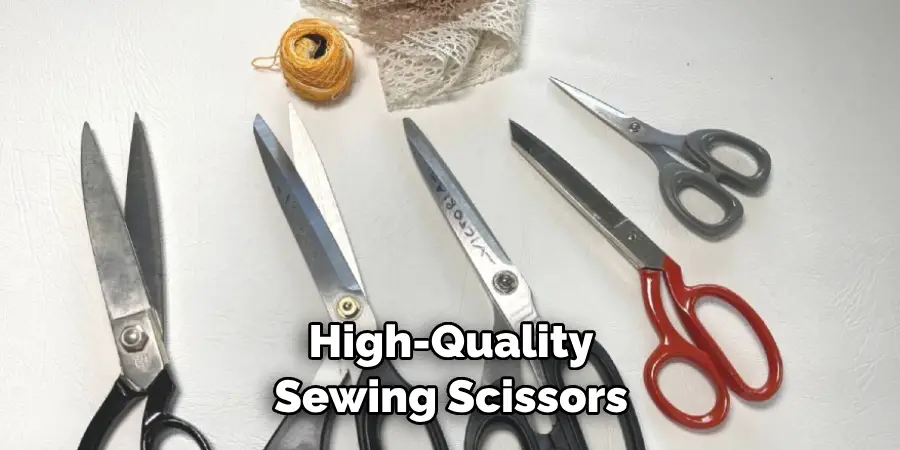
The successful sewing of silk requires not only skill and patience but also the use of specific tools and equipment designed to handle the fabric’s delicate nature. High-quality sewing scissors or shears are indispensable for making precise cuts without fraying the silk’s edges. A rotary cutter alongside a cutting mat can also be beneficial for ensuring clean, straight lines, especially when working with slippery silk fabrics.
In terms of sewing needles, opt for sharp, fine needles that can pierce the fabric without causing damage. Sizes 70/10 or 60/8 are typically suitable for most silk fabrics. Similarly, when selecting pins, choose fine, sharp pins to minimize any potential snagging or marring of the fabric surface. Silk pins or extra-fine glass head pins are recommended as they glide through silk with ease.
For marking the fabric, traditional tailor’s chalk might be too harsh on silk, so instead, consider using water-soluble fabric marking pens or pencils, ensuring they are tested on a scrap piece of silk before application to avoid any unexpected markings.
An iron with variable temperature settings and a steam option is critical for pressing seams without damaging the silk. Pairing the iron with a pressing cloth – preferably made of silk organza for its heat resistance and smoothness – can provide an additional layer of protection against heat.
Investing in a quality sewing machine that allows for adjustments in stitch length and tension is crucial, as is the use of a walking foot or a Teflon foot to prevent the fabric from slipping or puckering as you sew.
By assembling and utilizing these essential tools and equipment, sewers can significantly improve their capability to work with silk, ensuring the process is both enjoyable and yields the desired elegant results.
10 Methods How to Sew Silk
1. Choose the Right Needle and Thread:
Selecting the appropriate needle and thread is crucial when sewing silk. Opt for fine, sharp needles with a smaller gauge size to prevent damage to the delicate fibers of the fabric. Use high-quality silk thread that matches the color of your fabric for seamless seams and minimal visibility. Silk thread has a natural stretch that helps it move with the fabric, reducing the risk of breakage or puckering.
2. Pre-treat the Fabric:
Before cutting and sewing silk fabric, it’s essential to pre-treat it to remove any sizing, wrinkles, or impurities. Steam the fabric lightly or use a handheld garment steamer to relax the fibers and remove creases. Be cautious not to over-steam or apply too much heat, as this can damage the delicate silk fibers. Allow the fabric to dry completely before cutting and sewing to ensure accurate measurements and smooth seams.
3. Use Sharp Scissors and Pins:

When cutting silk fabric, use sharp scissors or rotary cutters to achieve clean, precise edges. Dull scissors can cause the fabric to fray or snag, leading to uneven seams or frayed edges. Use fine silk pins to hold the fabric in place while sewing, being careful not to pin too close to the edge to avoid leaving visible holes or marks in the fabric. Test the pins on a scrap piece of silk fabric to ensure they glide smoothly without snagging.
4. Practice Seam Finishes:
Silk fabric is prone to fraying, so it’s essential to finish the seams to prevent unraveling and ensure the longevity of your garment or project. Experiment with different seam finishes, such as French seams, flat-felled seams, or serged edges, to find the technique that works best for your fabric and project. French seams are ideal for lightweight silk fabrics, while flat-felled seams provide added strength and durability for heavier silks.
5. Adjust the Tension and Stitch Length:
When sewing silk fabric, adjust the tension and stitch length on your sewing machine to accommodate the delicate nature of the fabric. Lower the tension slightly to prevent puckering or distortion of the seams, and use a shorter stitch length to create secure, even stitches. Test the tension and stitch length on a scrap piece of silk fabric before sewing your project to ensure optimal results.
6. Use a Walking Foot or Teflon Foot:
To prevent the silk fabric from slipping or shifting during sewing, use a walking foot or Teflon foot attachment on your sewing machine. These specialized presser feet help feed the fabric evenly through the machine, reducing the risk of puckering or uneven stitching.
If you don’t have a walking foot or Teflon foot, you can also place tissue paper or tear-away stabilizer under the fabric to provide extra stability and prevent slippage.
7. Baste or Hand-baste Seams:
When working with slippery or delicate silk fabrics, it can be helpful to baste or hand-baste the seams before machine stitching them. Basting involves temporarily sewing the fabric layers together with long, loose stitches to hold them in place while you sew the final seam.
This technique helps prevent the fabric from shifting or stretching during sewing and ensures precise seam alignment. Remove the basting stitches after sewing the final seam for a clean finish.
8. Use a Press Cloth:
When pressing silk fabric, always use a press cloth to protect the delicate fibers from heat and prevent shine or scorching. Choose a lightweight, smooth fabric such as muslin or silk organza to use as a press cloth and place it between the iron and the silk fabric.

Use a low to medium heat setting on your iron and press the fabric gently, moving the iron in a smooth, continuous motion to avoid stretching or distorting the fabric.
9. Experiment with Different Stitch Types:
Silk fabric can be sewn using a variety of stitches, depending on the desired finish and the characteristics of the fabric.
Experiment with straight stitches, zigzag stitches, or decorative stitches to achieve different effects and embellishments. For hems and topstitching, consider using a blind hem stitch or a narrow rolled hem for a clean, professional finish.
Test different stitch types on scrap pieces of silk fabric to determine which stitches work best for your project.
10. Handle with Care:
Finally, handle silk fabric with care throughout the sewing process to avoid stretching, snagging, or staining the fabric. Avoid pulling or tugging on the fabric excessively, as this can distort the seams and cause puckering.
Keep your work area clean and free of dust and debris to prevent dirt or oil from transferring to the fabric. When storing finished garments or projects, hang them on padded hangers or store them flat to maintain their shape and prevent wrinkles.
Care and Maintenance of Silk Garments
Caring for silk garments properly ensures their longevity and preserves their delicate beauty. Silk, being a natural fiber, requires specific attention to keep it looking its best. Begin by always checking the garment’s care label before washing, as some silk items may be dry clean only.
If the item is washable, opt for hand washing in cool water using a mild detergent formulated for delicate fabrics. Avoid wringing or twisting the silk to remove water, as this can cause damage and misshape the garment. Instead, gently press the water out and roll it in a clean, dry towel to absorb excess moisture.

Air-drying silk garments away from direct sunlight preventing fading and fabric weakening. Ironing should be done on the reverse side of the garment using a low heat setting, and a press cloth between the silk and the iron is advised to avoid any potential heat damage.
Avoid storing silk garments in plastic bags which can trap moisture and lead to yellowing. Instead, use breathable fabric bags or store them in a dark, dry place to prevent fading. Regular care and maintenance of silk garments will maintain their color, texture, and quality, making them timeless pieces in your wardrobe.
Storing Silk Garments to Prevent Damage
To ensure the longevity and preservation of silk garments, appropriate storage methods are imperative. Always store silk in a cool, dry place to prevent the fabric from deteriorating.
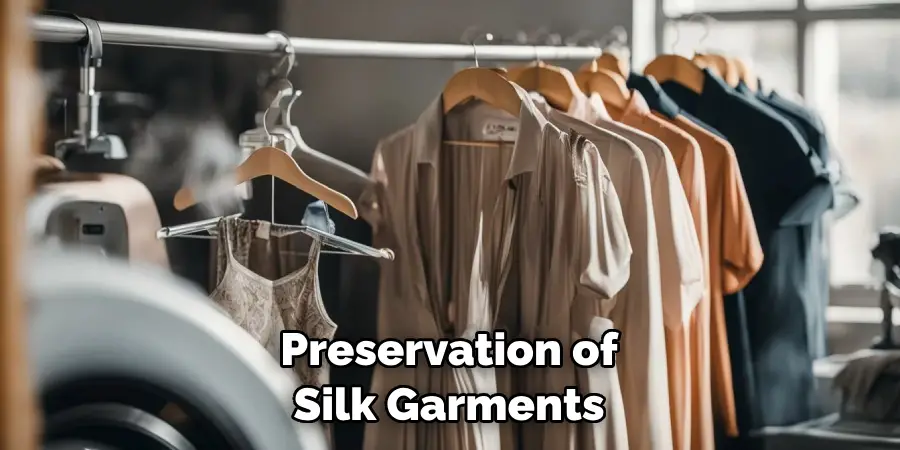
Utilize breathable garment bags or cover them with a cotton sheet rather than using plastic, as plastic can trap moisture, leading to yellowing and fabric breakdown. For items that may crease or deform, such as dresses or blouses, hanging them on padded hangers can maintain their shape and prevent creasing.
Conversely, for silk items that are prone to stretching, such as knitted silk sweaters, storing them flat in a drawer with acid-free tissue paper between the folds can help maintain their original condition. Be mindful to keep silk garments away from direct sunlight or artificial lights which can cause fading and weaken the fibers over time.
About the Author
Adrien Rowe, an expert in knitting, fiber arts, and bookbinding, promotes sustainability and creativity through workshops and tutorials. Passionate about education and community, he inspires crafters of all levels to learn, share, and grow in a supportive, idea-driven environment.
Professional Focus
Specializes in advanced knitting techniques, fiber manipulation, and textile innovation.
Expert in book arts, including cotton papermaking, handmade paper techniques, and bookbinding.
Dedicated to educating and inspiring crafters of all skill levels through tutorials, workshops, and hands-on learning experiences.
Passionate about creating a supportive community where makers can share ideas, learn, and grow.
Education History
Rhode Island School of Design (RISD) – Bachelor of Fine Arts (BFA) in Textiles.
University of Iowa Center for the Book – Master of Fine Arts (MFA) in Book Arts.
Expertise:
Advanced knitting, fiber manipulation, papermaking, bookbinding, sustainability-focused crafting, educational workshops, creative tutorials, and fostering a supportive maker community.
